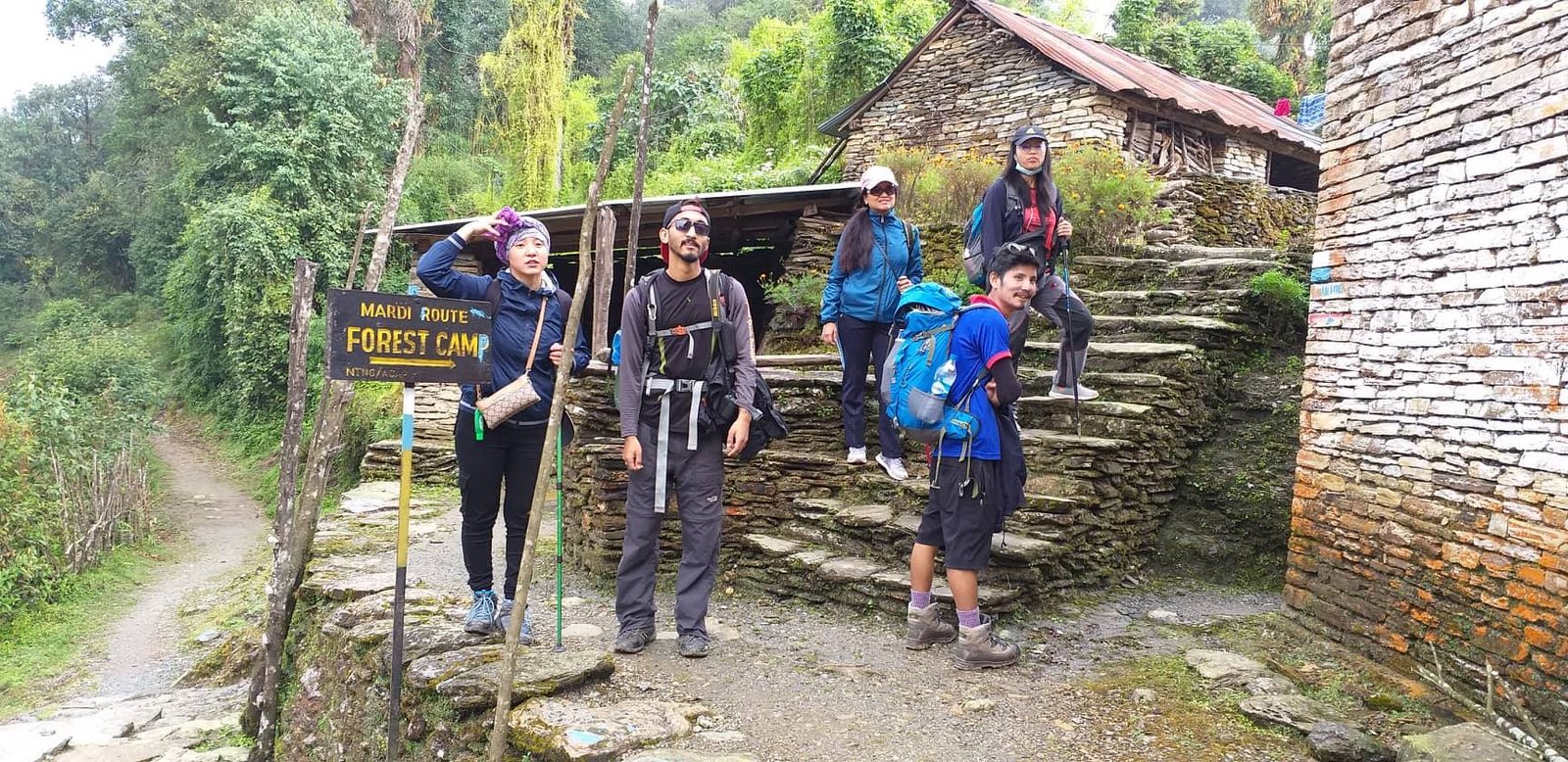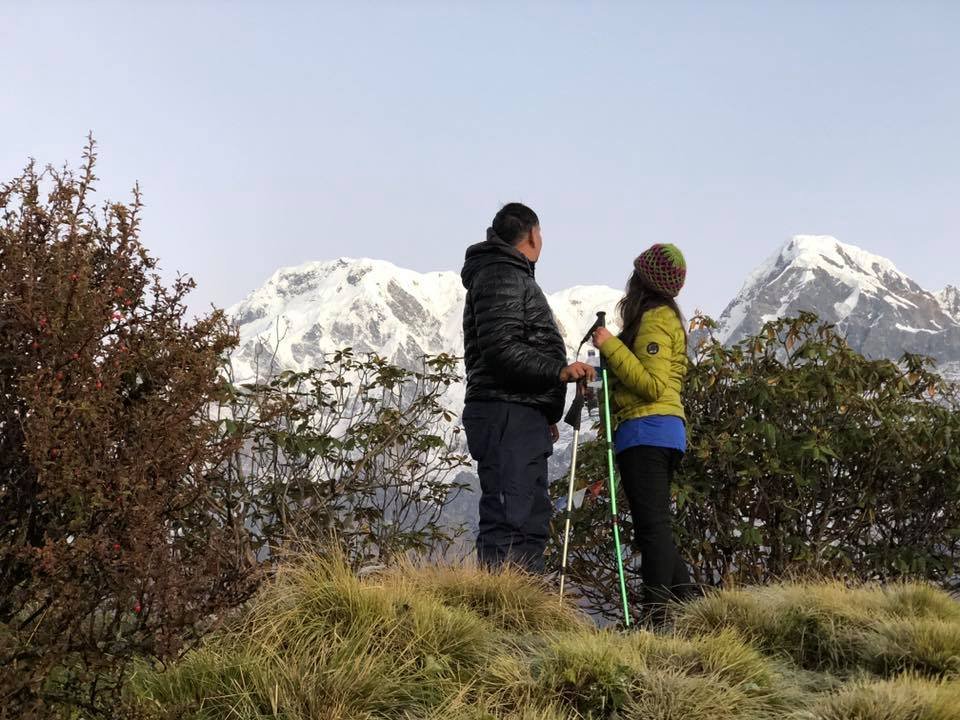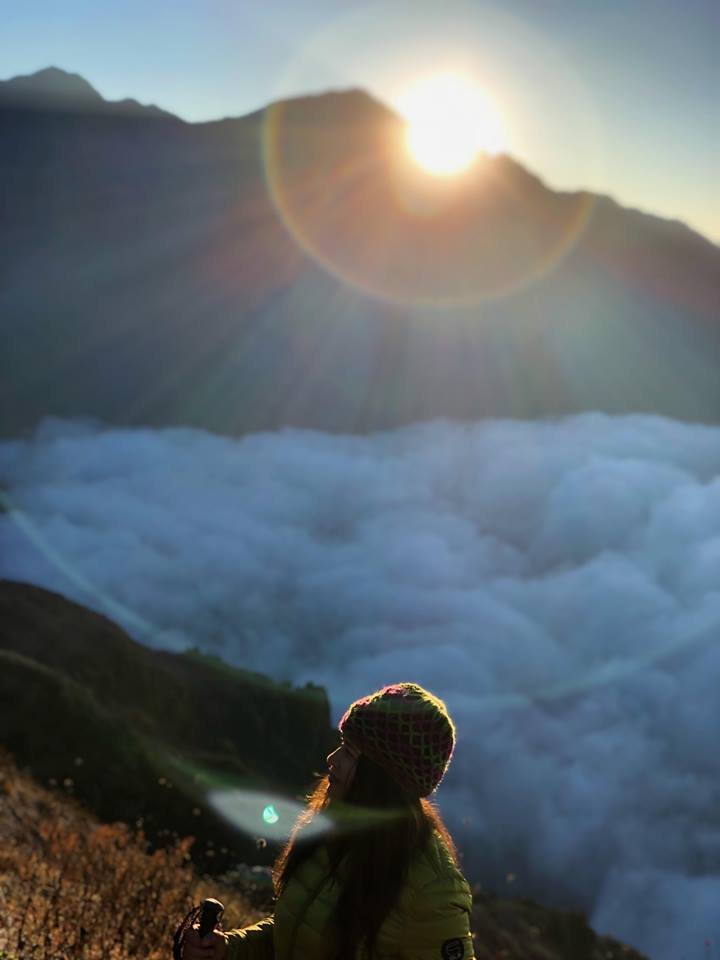Mardi Himal Trek
fromMardi Himal Trek is a legendary route amongst many trekking routes in Nepal. This is a low-elevation, moderate trekking trail inside the foothills of the Annapurna region.
This trekking route leads you through prosperous villages and dense forests with verities of flora and fauna. Moreover, you will experience the country lifestyle along with the phenomenal beauty of nature.
Trekkers officially started ascending the Mardi Himal trek in 2012. However, very few people know this trekking route in the Annapurna region. Nevertheless, as time passed by, many trekkers, from newbies to the most experienced ones loved this trekking route. The reason behind that is the trek route being a less crowded destination for trekkers. Furthermore, trekkers consider this route as an unseen gem where travelers lose track of time.
Talking about the trial, it goes along small winding paths, breathtaking mountain ridges, and amazing landscapes that abruptly approach the mountains with jaw-dropping views of the majestic Himalayas like Annapurna Himalayan range, Dhaulagiri I, and Nilgiri.
Highlights of the Mardi Himal Trek
- Outstanding 10-day adventure to the least visited part of the Nepali Himalayas with challenging yet worthy trails and views.
- A better chance to understand the lifestyle, culture, tradition, and other different aspects of the people living in the Mardi Himal region.
- The Mardi Himal trek also allows travelers to witness the beauty of rhododendrons and other forests during spring.
- Experience the perfect sunrise and sunset view from the top of Mardi Himal along with eye-soothing landscapes and vegetation.
-
Reviews 0 Reviews0/5
-
Vacation Style Holiday TypeGuided Tours
-
Activity Level Moderate
-
2 to 16 Pax
Mardi Himal Trekking is a legendary trekking destination, which is a low-elevation, moderate trekking trail inside the foothills of the Annapurna region.
The Mardi Himal trekking route leads you through prosperous villages and dense forests with verities of flora and fauna. Moreover, you will get an experience of the country lifestyle along with the phenomenal beauty of nature.
Mardi Himal trek was officially opened in 2012 for trekkers. Since then, this trekking route has been a hidden treasure of the Annapurna region which could be done within a short time frame by all trekkers. This less crowded destination is an unseen gem where travelers can and will lose track of time.
Furthermore, the trail goes along small winding paths, breathtaking mountain ridges, and amazing landscapes that abruptly approach the mountains with jaw-dropping views of the majestic Himalayas.
Outline Itinerary
1st Day: Arrival
2nd Day: Drive to Pokhara (827m/2,700ft)
3rd Day: 1 hour Drive to Kade and about two hours Trekking to Australian Base Camp (1890m/6200ft)
4th Day: Trek to Forest Camp (2,520m/8064ft): approx trek 6- 7 hours
5th Day: Trek to High camp (3540m/11,328ft): approx 6/ 7 hours
6th Day: Trek to Mardi Base Camp (4,500m/14765ft) Overnight at Badal Dhada: approx 8-9 hours
7th Day: Descent to Siding (1845m/6053ft) approx 5-6 hours trek
8th Day: Drive to Pokhara (approx 4 hours)
9th Day: Drive to Kathmandu approx 7-9 hours
10th Day: Departure
- Airport Pick up and Drop by Private Vehicle.
- Kathmandu Valley UNESCO World Heritage Site Sightseen
- Welcome dinner at a Nepalese restaurant with a culture show.
- 3 Night Accommodation at Kathmandu on 3 Star Category Hotel with BB plan (Bed and Breakfast)
- All ground transfers are according to the Itinerary
- National Park entry ticket
- 1 Experience Trekking Guide and (2 Guest =1 Porter)
- Mountain Tea House, accommodations with full board meals during the trek (Breakfast, lunch and dinner)
- Travel insurance for Nepali staff (Guide and Porter)
- Travel insurance and emergency evacuation.
- Personal expenses (like phone calls, Wi-Fi changes, bar bills, battery changes, extra potters, hot showers, etc.)
- Nepal Visa fees
- Lunch & Dinner in Kathmandu Hotel.
- In case of natural calamities i.e. political unrest, cancellation of flight due to weather, landslides, etc the extra charge should be borne by clients.
- Tips for trekking staff.
- Day1 Kathmandu Arrival
- Day2 Drive to Pokhara (827m/ 2,700ft) approx. 5-7 hours drive
- Day3 Drive to Kande and about two hours Trekking to Australian Base Camp (1890m/6200ft)
- Day4 Trek to Forest Camp (2,520m/8064ft): approx. trek 6- 7 hours
- Day5 Trek to high camp via low camp and Badal dada (3540m/11,328ft): approx. 6/ 7 hours
- Day6 Trek to Mardi Base Camp (4,500m/14765ft) Overnight at Badal Dhada: approx. 8-9 hours
- Day7 Descent to Siding (1845m/6053ft) approx. 5-6 hours trek
- Day8 Drive to Pokhara (approx. 4 hours)
- Day9 Flight/ Drive to Kathmandu approx 7-9 hours
- Day10 Departure
Tea House Accommodation while trekking in Nepal
Tea house accommodation is a popular and traditional lodging option for mountain trekkers in various regions, especially in places like the Himalayas and other mountainous areas. Here’s some information about tea house accommodation for mountain trekking:
Tea House Definition: Tea houses are basic lodges or guesthouses located along popular trekking routes in mountainous regions. They offer a place for trekkers to rest, eat, and sleep during their journey.
Facilities: Tea houses vary in terms of facilities, but most provide simple and essential amenities such as a bed, blankets, and a communal dining area. Some may also offer hot showers, Wi-Fi, and charging facilities, but the level of comfort depends on the location and altitude.
Food: Tea houses typically serve meals, and the menu often includes a variety of local and international dishes. The food is generally hearty and designed to provide the energy needed for trekking. Common items include dal bhat (a traditional Nepali dish), noodles, rice, and soups.
Sustainability: Many tea houses aim to be environmentally friendly and promote responsible tourism. They may have eco-friendly practices, such as solar heating for water, waste disposal methods, and efforts to minimize their environmental impact.
- Airport Pickup and Drop by Private Vehicle.
- Kathmandu Valley UNESCO World Heritage Site Sightseen
- Welcome dinner at a Nepalese restaurant with a culture show.
- 3 Night Accommodation at Kathmandu on 3 Star Category Hotel with BB plan (Bed and Breakfast)
- All ground transfers as according to the Itinerary
- National Park entry ticket
- 1 Experience Trekking Guide and (2 Guest =1 Potter)
- Mountain Tea House, accommodations with full board meals during the trek (Breakfast, lunch and dinner)
- Travel insurance for Nepali staff (Guide and Potter)
- Travel insurance and emergency evacuation.
- Personal expenses (like phone calls, Wi-Fi changes, bar bills, battery changes, extra potters, hot showers etc.)
- Nepal Visa fees
- Lunch & Dinner in Kathmandu Hotel.
- In case of natural calamities i.e. political unrest, cancellation of flight due to weather, landslides etc the extra charge should be borne by clients.
- Tips for trekking staff.
- The best trekking seasons are spring (March to May) and autumn (September to November). These periods offer stable weather and clear skies.
- Most treks require a TIMS (Trekkers’ Information Management System) card and a trekking permit issued by the respective trekking area’s conservation or national park authority.
- The difficulty of treks varies, but most treks require a moderate level of fitness. It’s advisable to engage in regular cardiovascular and strength training exercises before the trek.
It’s advisable to drink filtered or purified water to avoid waterborne diseases. Carry a water purification gun and Tablets or use water filters. Bottled water is also available in many places, but be mindful of environmental concerns and consider using a reusable water bottle.
While some popular routes have ATM facilities, it’s advisable to carry enough cash for the entire trek, as remote areas may not have banking facilities.
Popular treks include the Everest Base Camp trek, the Annapurna Circuit, the Langtang Valley trek, and the Manaslu Circuit. Each offers unique landscapes and cultural experiences.
Trek difficulty varies. Some treks are relatively easy and suitable for beginners, while others are more challenging and demand a higher level of fitness and experience.
Yes, acclimatization is crucial to avoid altitude sickness. It involves gradually ascending to higher altitudes, allowing your body to adjust to lower oxygen levels.
During trekking, you will be served meals in the teahouses. Typical meals are rice, pasta or potato dishes along with vegetables and egg/chicken/meat dishes. Other items mostly served as breakfasts include porridge, muesli and toast with peanut butter and honey.






